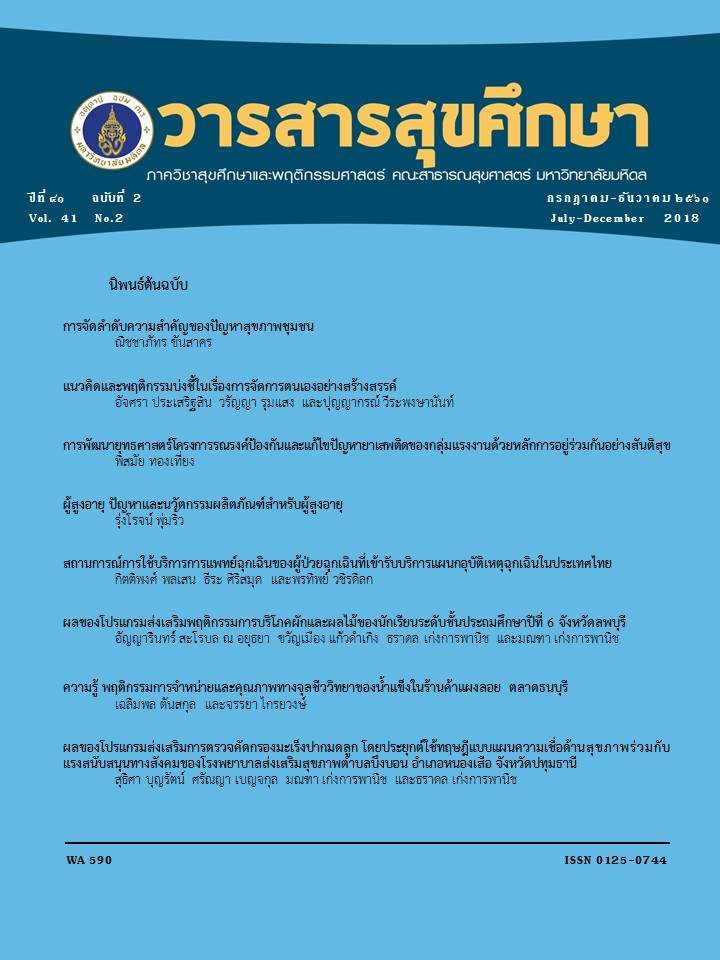Family Patterns in Families with Liver-Transplanted Children
Main Article Content
Abstract
This phenomenological qualitative research aimed to explore the family pattern in the families with children who underwent a liver-transplantation. The key informants were the parents or caregivers who were taking care of a liver-transplanted child under six years old and were discharged from the hospital more than six months before the time of the study from 19 families. Data were collected and carried out through in-depth interviews by question guideline with audio records of the interviews on January 2013 to June 2013. Content analysis was employed in data processing.
The results showed that both parents in 13 families were involved in the decision making for the undergoing of liver-transplantation, and 12 families of liver donors were the mothers. All families with liver-transplanted children were affected to a certain degree in terms of daily living and economic status. Based on impacts on the families, the family patterns could be classified into two types: 1) Adjustable family pattern, in which the families were able to cope with the crisis appropriately and suffered a slightly impact, and about 83% of them were single families; and 2) Non-adjustable family pattern, in which the families failed to adjust and encounter the crisis appropriately, which resulted in psychological and emotional impacts, poor family relationship, high level of stress in family, and 77% of them were extended families. The results from this research can be informed the development of instructions for the families of the children that will undergo a liver-transplantation to ensure that the direct family members will engage in the provision of care throughout the admission for liver transplantation and continuously care periods, include more information for home care.


